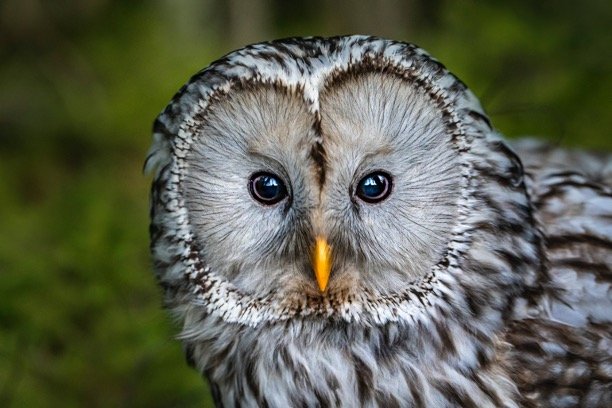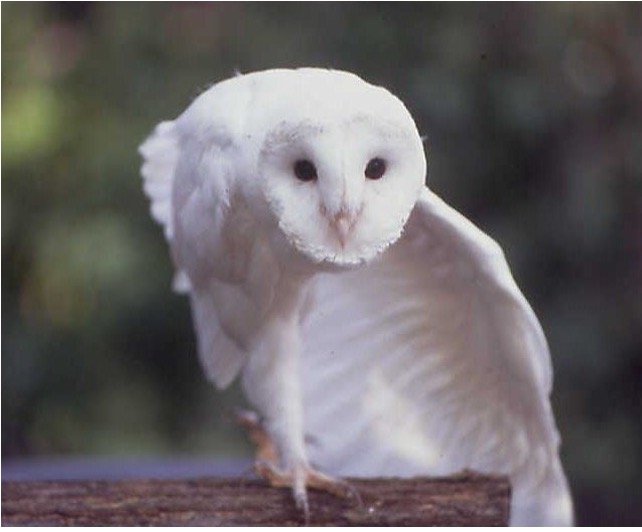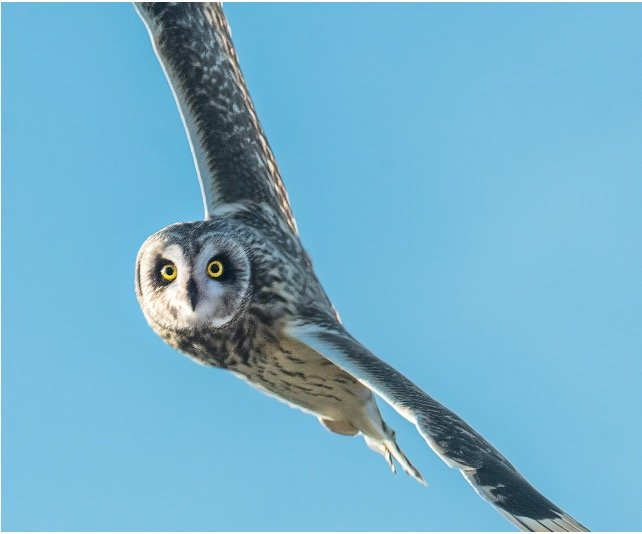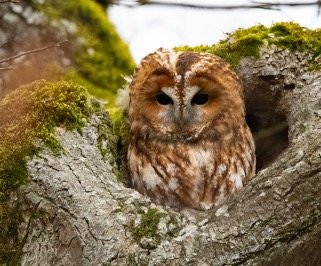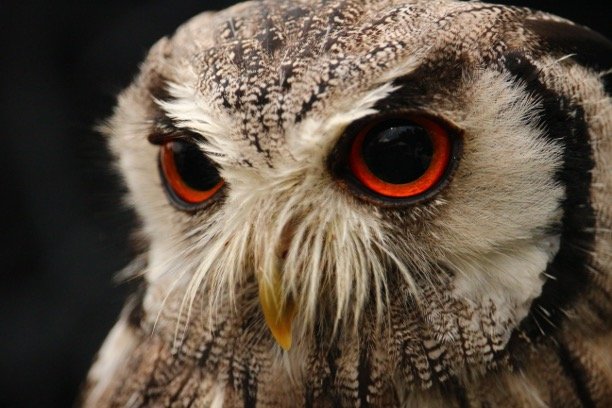
Owls Eye
Owls’ eyes are among the most fascinating in the animal kingdom. Their large, forward-facing eyes have been specially adapted to aid in hunting and survival in their environment. Owls are known for their exceptional night vision, which is attributed to their large eyes and a high density of light-sensitive cells known as rods in their retinas.
Owls can also rotate their heads 270 degrees, allowing them to scan their surroundings without moving their bodies. Owls have a number of other eye adaptations that allow them to be effective hunters.
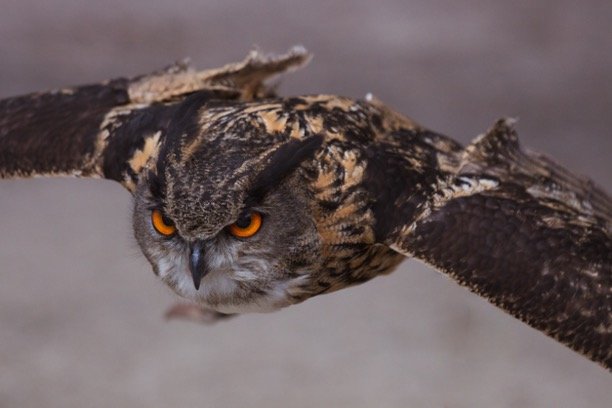
Many species of owls, for example, have a facial disc, a concave arrangement of feathers around their eyes that helps funnel sound to their ears. This enables them to locate prey based solely on sound, even in complete darkness.
Some owl species have asymmetrical ear placements, which enhances their ability to locate sound sources. Owls’ eyes are not only functional but also aesthetically pleasing.
They are often large and expressive, and come in a variety of colors such as yellow, orange, brown, and black. Owls have long been a popular subject in art, literature, and folklore due to their remarkable eyes.
Structure of Owls Eye
The structure of an owl’s eye is similar to that of other birds of prey, with some adaptations that allow them to see in low-light conditions. Here are the main parts of an owl’s eye:

1. Cornea: The clear outer layer that protects the eye and helps focus light onto the retina.
2. Iris: The colored part of the eye that controls the size of the pupil and regulates the amount of light that enters the eye.
3. Pupil: The black circular opening in the center of the iris that allows light to enter the eye.
4. Lens: A flexible, transparent structure behind the iris that helps focus light onto the retina.
5. Retina: The layer of light-sensitive cells at the back of the eye that converts light into electrical signals that the brain can interpret.
6. Fovea: A small depression in the retina that contains a high concentration of cones, which are specialized for detecting fine details and colors.
7. Optic nerve: The nerve that carries visual information from the eye to the brain.
Owl Feathers: Identification, Facts, Types, and Pictures
Types of Owls Eye
There are many different types of owls, each with its own set of eye characteristics. Here are a couple of examples:
1. Barn owls have large, heart-shaped faces with dark eyes set in a light-colored feather mask. Their eyes are extremely sensitive to low light and motion, making them excellent hunters.
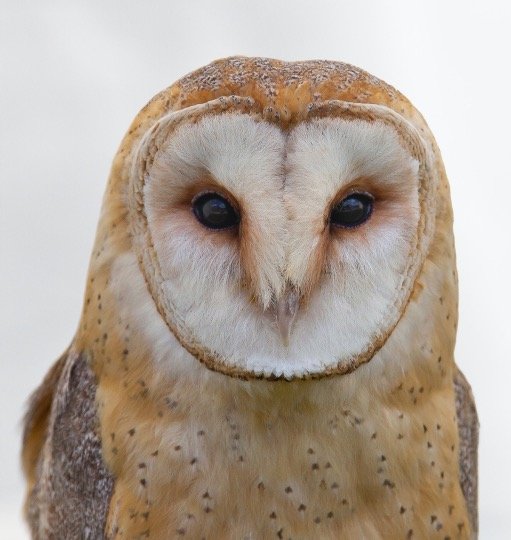
2. Snowy owls have bright yellow eyes that allow them to see clearly in low light, allowing them to hunt effectively in the Arctic tundra where they live.
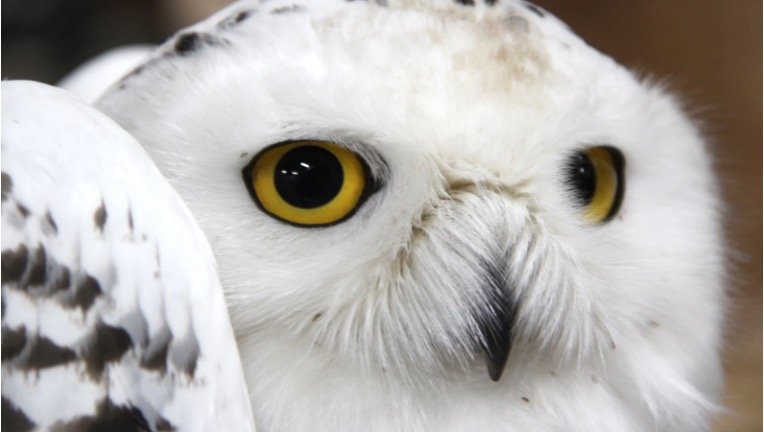
3. Great horned owls have large eyes set in a prominent facial disc that functions like a satellite dish to assist them in locating prey by sound.
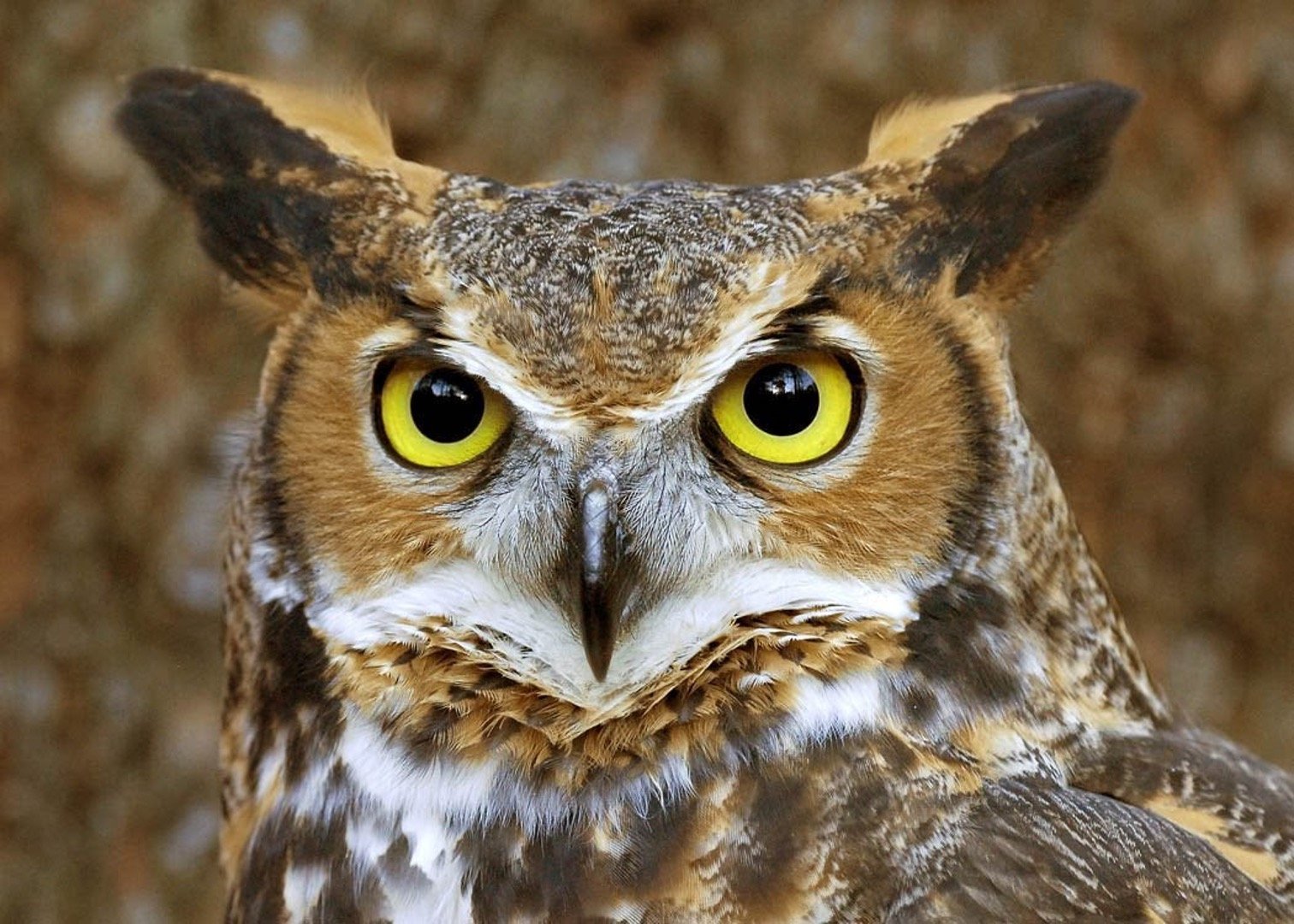
4. Saw-whet owls have large, round eyes that are set forward on their face, providing them with excellent depth perception and vision when hunting small prey.
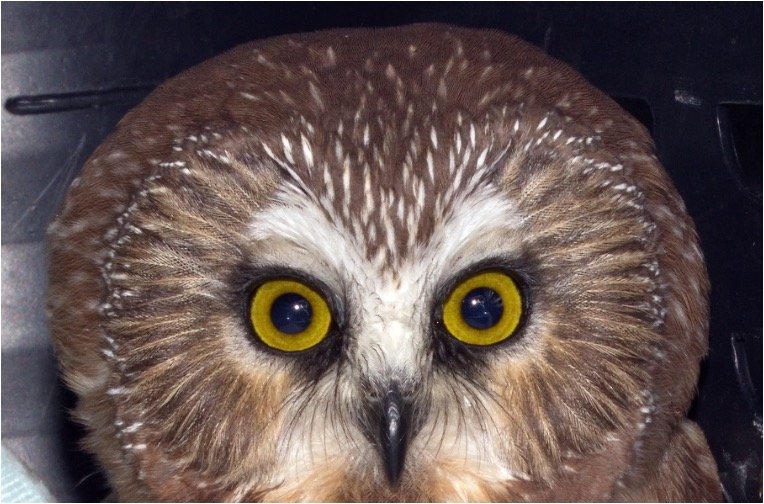
5. Burrowing owls have bright yellow eyes set low on their faces, allowing them to see predators approaching from all directions while they are out of their burrows.
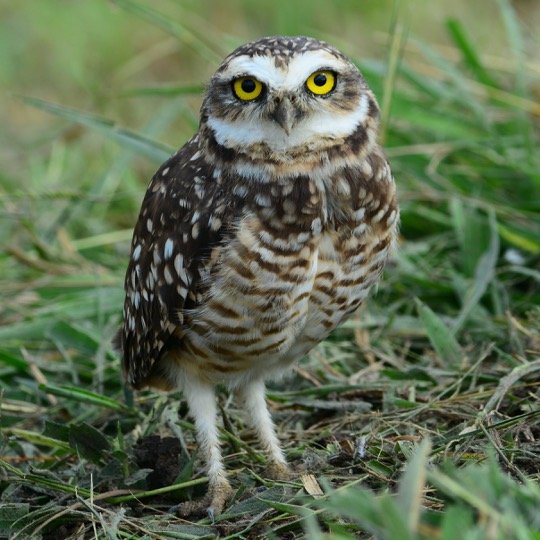
6. Long-eared owls have bright orange eyes set in a dark facial disc, giving them excellent night vision and assisting them in locating prey in the dark.
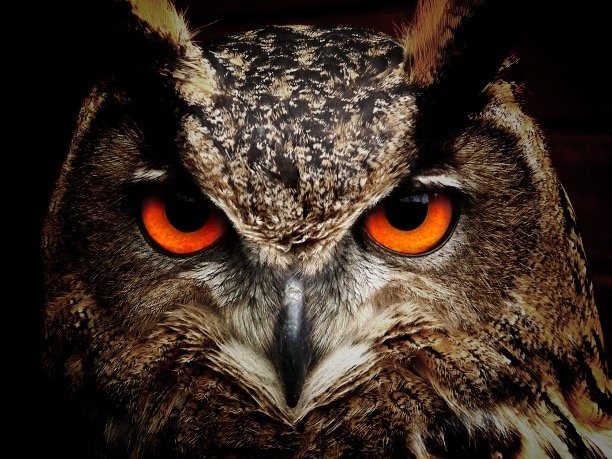
7. Screech owls have large eyes set in a facial disc, which aids them in hearing and locating prey at night.
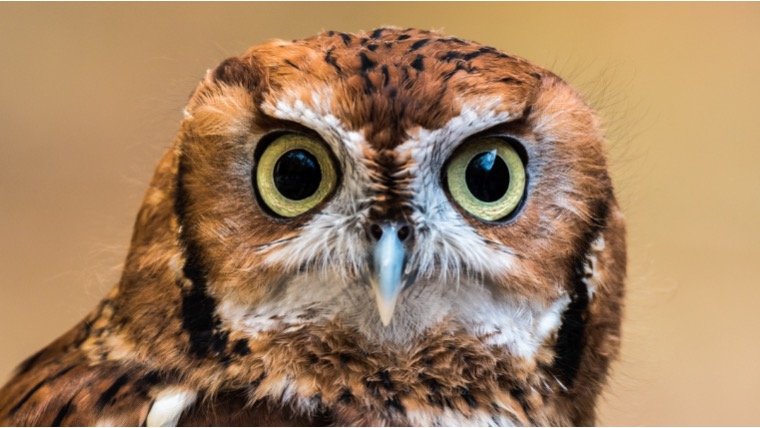
Owls Eye Facts
1. Owls have very large eyes relative to the size of their head. This enables them to collect more light and see in low-light situations.
2. An owl’s eyes are not spherical, but rather tube-shaped, giving them excellent depth perception and the ability to focus on prey.
3. Owls’ eyes contain a high density of rod cells, which are responsible for detecting low levels of light. As a result, they are well-suited to hunting at night.
4. Owls’ eyes have a unique adaptation that allows them to rotate their heads up to 270 degrees without moving their bodies. This increases their field of view and allows them to detect prey even when it is out of sight.
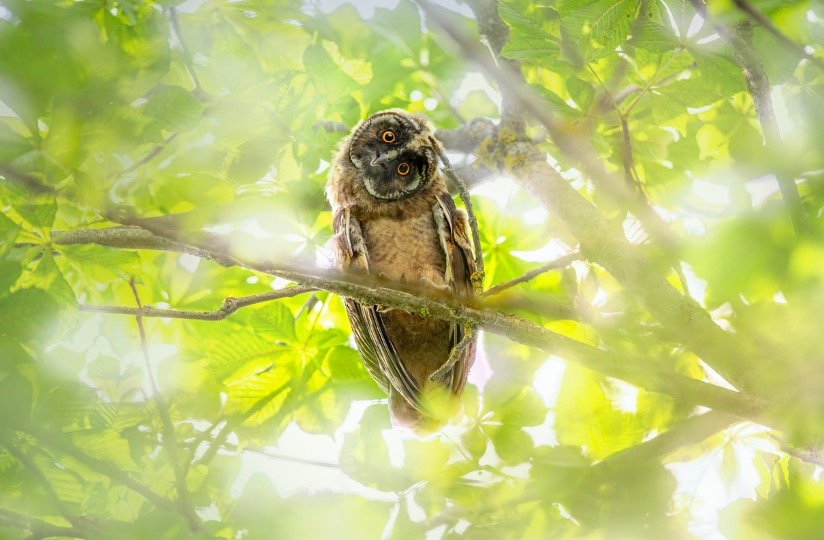
5. The color of an owl’s eyes varies according to species. The eyes of some owls are yellow, while others are orange, brown, or black.
6. Some owl species’ eyes are so large that they can’t move them within their eye sockets. To change their field of view, they must instead rotate their entire head.
7. Owls have a third eyelid, known as a nictitating membrane, that serves as a protective layer for their eyes while allowing them to see.
How Large Are Owls Eye?
The size of an owl’s eye varies according to species. However, when compared to the size of their head and body, owls have relatively large eyes. In fact, their eyes are among the largest in relation to their body size of any bird.
A great horned owl’s eyes, for example, can be 1.5 inches (3.8 cm) in diameter, and its head can be 8 inches (20 cm) in length. This means that the diameter of its eyes is approximately one-fifth the length of its head. A barn owl’s eyes can be up to 1.3 inches (3.3 cm) in diameter, and its head can be up to 10 inches (25 cm) in length.

The large eyes of owls are an adaptation that allows them to see in low light conditions. Their large eyes allow them to gather more light, while their retinas’ high density of light-sensitive cells allows them to detect even small amounts of light. This allows them to hunt effectively at night and in low light.
| Owl species | Eye diameter (centimeters) |
| Great horned owl | 3.8 |
| Barn owl | 3.3 |
| Snowy owl | 3.0 |
| Screech owl | 2.3 |
| Saw-whet owl | 1.5 |
| Burrowing owl | 1.3 |
Owls Eye vs Human Eye
Owls’ eyes are adapted to their nocturnal lifestyle and hunting behaviors, and they differ from human eyes in several ways. Here are a few key distinctions:
1. Size: Owls’ eyes are much larger in proportion to their body size than human eyes. This enables them to collect more light and have a wider visual field.
2. Shape: Owl eyes are more tubular than human eyes, giving them a larger image-forming area and allowing them to focus more precisely in low light conditions.
3. Retina structure: Owl retinas contain more rod cells than human retinas, allowing them to see well in low light conditions but limiting their color vision.
4. Binocular vision: Owls have a larger binocular field of vision than humans, allowing them to see more of their surroundings without moving their heads.
5. Nocturnal vision: To improve their night vision, owls’ eyes have a specialized structure called a tapetum lucidum, which reflects light back through the retina. Humans lack a tapetum lucidum.
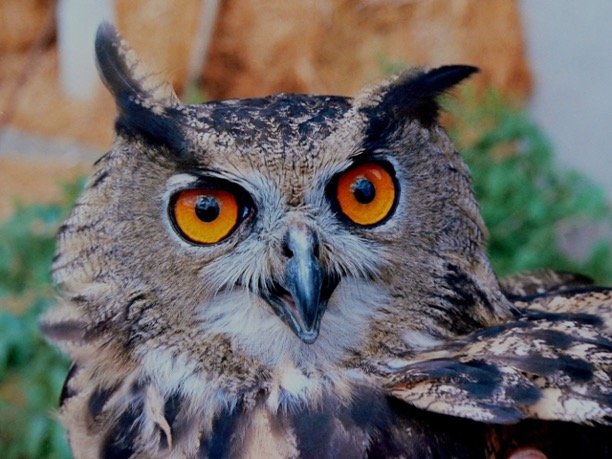
Do Owls Have 3 Eyelids?
Yes, owls have three eyelids, whereas humans only have two. The upper eyelid, which moves up and down when an owl blinks, is the first eyelid. The lower eyelid is the second movable eyelid and helps to keep the eye moist and clean.
The nictitating membrane, also known as the third eyelid or “haw,” is a thin, translucent membrane that moves horizontally across the eye from the inside corner and covers the eye diagonally.
The nictitating membrane protects and cleans the owl’s eye, which is especially important when the owl is hunting or flying in dusty or debris-filled environments. It also aids in eye lubrication and moisture retention.

Why Do Owls Have 3 Eyelids?
Owls have three eyelids for a variety of reasons, including:
1. Protection: The nictitating membrane, also known as the third eyelid, protects the owl’s eyes while hunting or flying, particularly in dusty or debris-filled environments. This membrane also acts as a barrier, keeping the eye moist and clean.
2. Clear vision: The nictitating membrane also contributes to clear vision by removing debris or dust from the eye’s surface. This allows the owl to maintain its excellent vision and hunting accuracy.
3. Moisture: The nictitating membrane also helps to lubricate the eye and maintain moisture, which is essential for the health and function of the owl’s eyes.
Do Owls Eye Help in Night Hunting?
Yes, the eyes of owls are crucial to their hunting abilities. Owls are primarily nocturnal hunters, and their large, forward-facing eyes have been specially adapted to assist them in seeing in low light conditions.
Owls’ retinas contain a high density of rod cells, which are more sensitive to light than the cone cells used by humans for daytime vision. This enables them to see well in low-light conditions, such as at dawn and dusk, and to hunt effectively in total darkness.
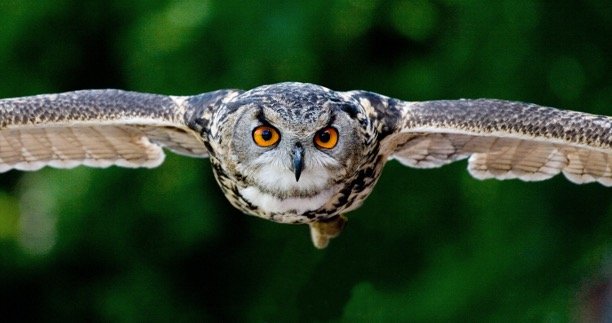
Which Animal Has The Best Eyesight?
Different animals have adapted to excel in different aspects of vision, such as color perception, night vision, or the ability to detect motion or polarization, so which animal has the best eyesight is a matter of debate. However, the following animals are known to have exceptional vision:
1. Birds of prey, such as eagles, hawks, and falcons, have excellent eyesight, allowing them to spot prey from long distances and accurately target their prey while in flight.
2. With 16 color receptors and the ability to see polarized light, mantis shrimp have the most complex eyes in the animal kingdom.
3. Chameleons have eyes that move independently, allowing them to focus on two different objects at the same time, and they can rotate their eyes 180 degrees to see behind them.
4. Tarsiers have the largest eyes of any mammal in relation to their body size, allowing them to see well in the dark and detect the smallest movements of prey.
5. Some fish, like the archerfish, have evolved to have exceptional vision in order to accurately shoot down prey with water droplets.
Why Do Native Americans Avoid Owl Eyes?
Owls are considered to be symbols of death or bad luck in some Native American cultures, and their eyes are sometimes avoided or even feared. The reasons for this vary according to culture and tradition, but the following are some common beliefs:
1. Owls are sometimes associated with spirits or supernatural beings who are thought to bring people bad luck or harm. Owls are thought to be messengers of death or spirits of the dead in some Native American cultures, and their eyes are thought to be windows into the spirit world.
2. Owls are seen as symbols of death or misfortune in some Native American cultures because they are associated with hunting and killing.
3. Owls have been associated with various superstitions in Native American traditions, as they have in many cultures. Some people believe that looking into an owl’s eyes can bring bad luck or illness.
